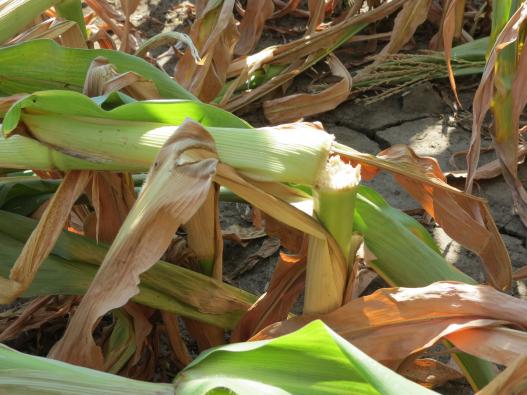Background:
Greensnap in corn happens when strong and sudden winds appear with thunderstorms during the stalks’ rapid-growth phase. Greensnap can happen as early as the fifth to eighth leaf stages but is more common in the 12th leaf stage through tasseling. This is a huge issue as new cell walls are very fragile and take time to harden. Conditions for greensnap are favorable during rapid growth, in high temperatures with good soil moisture, and when using phenoxy type herbicides.
Factors:
- Timing
- Direction
- Velocity of winds
- Growing conditions
- Management practices
- Hybrid characteristics
 Assessing and Yield Loss:
Assessing and Yield Loss:
Greensnap corn can still produce ears above the primary ear nodes. If broken below, it may produce nubbin, or small nonproductive ears. This could create loss in yield. If greensnap occurs, expect weed growth in your field. The increased weed infestation and broken stalk below the ear node could lead to excessive yield loss.
Management:
- Plant high-rated defense against greensnap.
- During planting, plant windbreaks.
- Plant in different orientations (North/South rows).
- Best to not apply growth regulator past third leaf stage. (Greensnap in corn Iowa State)



